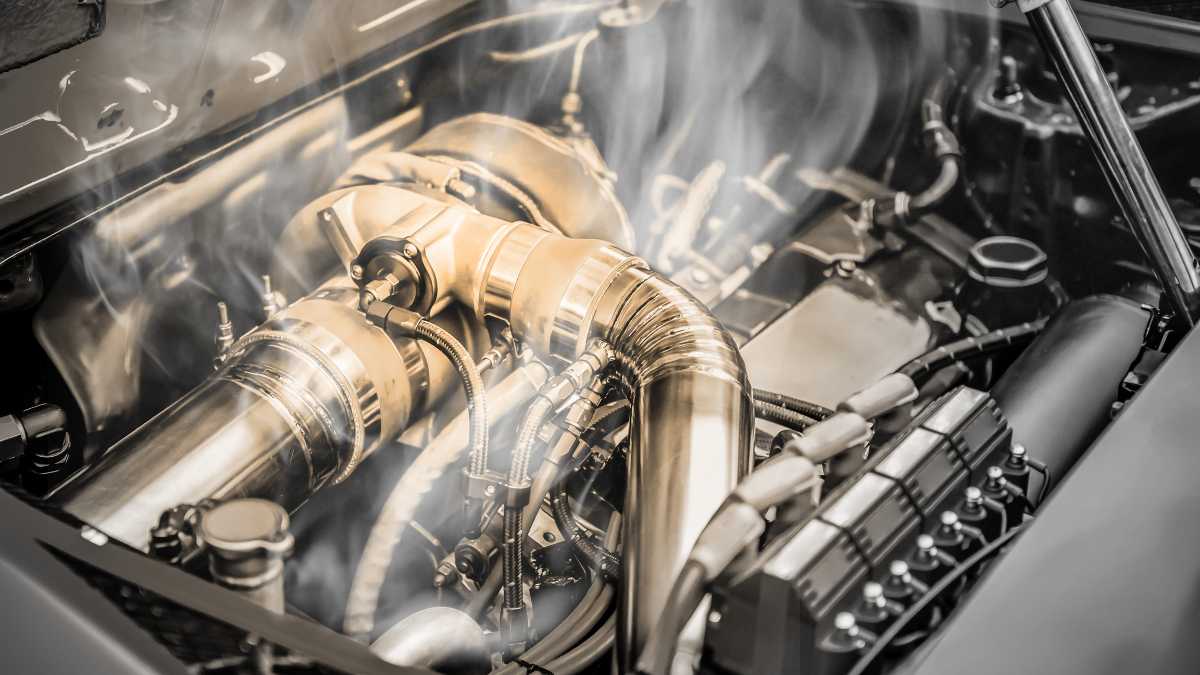Popular pickup trucks like the Ford F150 are renowned for their toughness, dependability, and longevity. However, it is susceptible to issues like burning just like any other car. We will examine What Causes a Ford F150 to Overheat and Know its Fixes.
Causes of Overheating
Coolant Leaks
The most common cause of overheating in the Ford F150 is a coolant leak. Coolant is responsible for keeping the engine cool by circulating through the engine and radiator. If there is a leak in the coolant system, the coolant level will decrease, and the engine will not be able to cool itself effectively.
To determine if there is a coolant leak, you can check the coolant level in the overflow tank. If it is low, there may be a leak. You can also inspect the hoses and radiator for any signs of leaking coolant. If you find a leak, you will need to have it repaired before it causes further damage to the engine.
Thermostat Failure
A broken thermostat is another frequent reason for the Ford F150 to warm. The thermostat controls the coolant supply to the motor to control engine temperature. The motor will not receive enough coolant if the valve doesn’t release, which will lead to overheating.
You can check the temperature monitor on the motor to see if the thermostat is broken. The thermostat may be to blame if the gauge reads higher than usual or alternates between heated and chilly conditions. The temperature will need to be changed in this situation.
Radiator Issues
The radiator is responsible for cooling the engine by dissipating heat. If there is an issue with the radiator, such as a clogged radiator, it will not be able to perform its function correctly, causing the engine to overheat.
To determine if the radiator is the issue, you can check for any physical damage to the radiator, such as cracks or leaks. You can also inspect the radiator for any debris or dirt that may be blocking the airflow. If you find any issues, you may need to have the radiator repaired or replaced.
Cooling Fan Failure
To keep the motor cold, the cooling fan draws air through the radiator. If the cooling fan breaks down, the motor won’t get enough ventilation and will overheat as a result.
To determine if the cooling fan is malfunctioning, you can listen for any unusual noises coming from the engine compartment, such as a loud humming sound. You can also visually inspect the cooling fan for any physical damage or signs of wear and tear. If you find any issues, you may need to have the cooling fan replaced.
Water Pump Failure
The water pump is responsible for circulating the coolant through the engine and radiator. If the water pump fails, the coolant will not be able to circulate effectively, causing the engine to overheat.
To determine if the water pump is malfunctioning, you can check for any leaks or signs of wear and tear on the water pump. You can also listen for any unusual noises coming from the engine compartment, such as a grinding or whining sound. If you find any issues, you may need to have the water pump replaced.
Fixes for Overheating
Refill Coolant
If the Ford F150 is overheating due to a coolant leak, the first step is to refill the coolant. You can do this by adding coolant to the overflow tank until it reaches the proper level. You can also add water if needed. Once the coolant is refilled, you can inspect the coolant system for any leaks and have them repaired.
Replace Thermostat
If the thermostat is the cause of the overheating, you will need to have it replaced. This is a relatively simple fix that can be done by a mechanic or an experienced DIYer. The process involves draining the coolant, removing the old thermostat, and installing a new one. It is important to use a high-quality thermostat to ensure proper functioning and prevent future overheating issues.
Clean or Replace the Radiator
If the radiator is the cause of the overheating, it may need to be cleaned or replaced. A clogged radiator can be cleaned using a radiator flush solution and a hose. If the radiator is damaged, it will need to be replaced. A new radiator can be purchased from an auto parts store or a dealership, and the replacement process involves removing the old radiator and installing the new one.
Replace Cooling Fan
If the cooling fan is the cause of the overheating, it will need to be replaced. The replacement process involves removing the old cooling fan and installing a new one. It is important to use a high-quality cooling fan to ensure proper functioning and prevent future overheating issues.
Replace Water Pump
If the water pump is the cause of the overheating, it will need to be replaced. The replacement process involves removing the old water pump and installing a new one. It is important to use a high-quality water pump to ensure proper functioning and prevent future overheating issues.
Preventative Measures
To prevent overheating in the Ford F150, it is important to perform regular maintenance on the vehicle. This includes checking the coolant level and system for leaks, inspecting the hoses and radiator for damage or wear, and replacing the coolant as needed. It is also important to replace the thermostat, cooling fan, and water pump at the manufacturer’s recommended intervals to prevent malfunction and overheating.
Conclusion
Overheating in the Ford F150 can be caused by several factors, including coolant leaks, thermostat failure, radiator issues, cooling fan failure, and water pump failure. To fix overheating issues, the coolant can be refilled, the thermostat can be replaced, the radiator can be cleaned or replaced, the cooling fan can be replaced, and the water pump can be replaced.
Preventative measures, such as regular maintenance and replacing parts at recommended intervals, can also help prevent overheating issues. If you experience overheating in your Ford F150, it is important to address the issue promptly to prevent damage to the engine and ensure the vehicle’s longevity.






